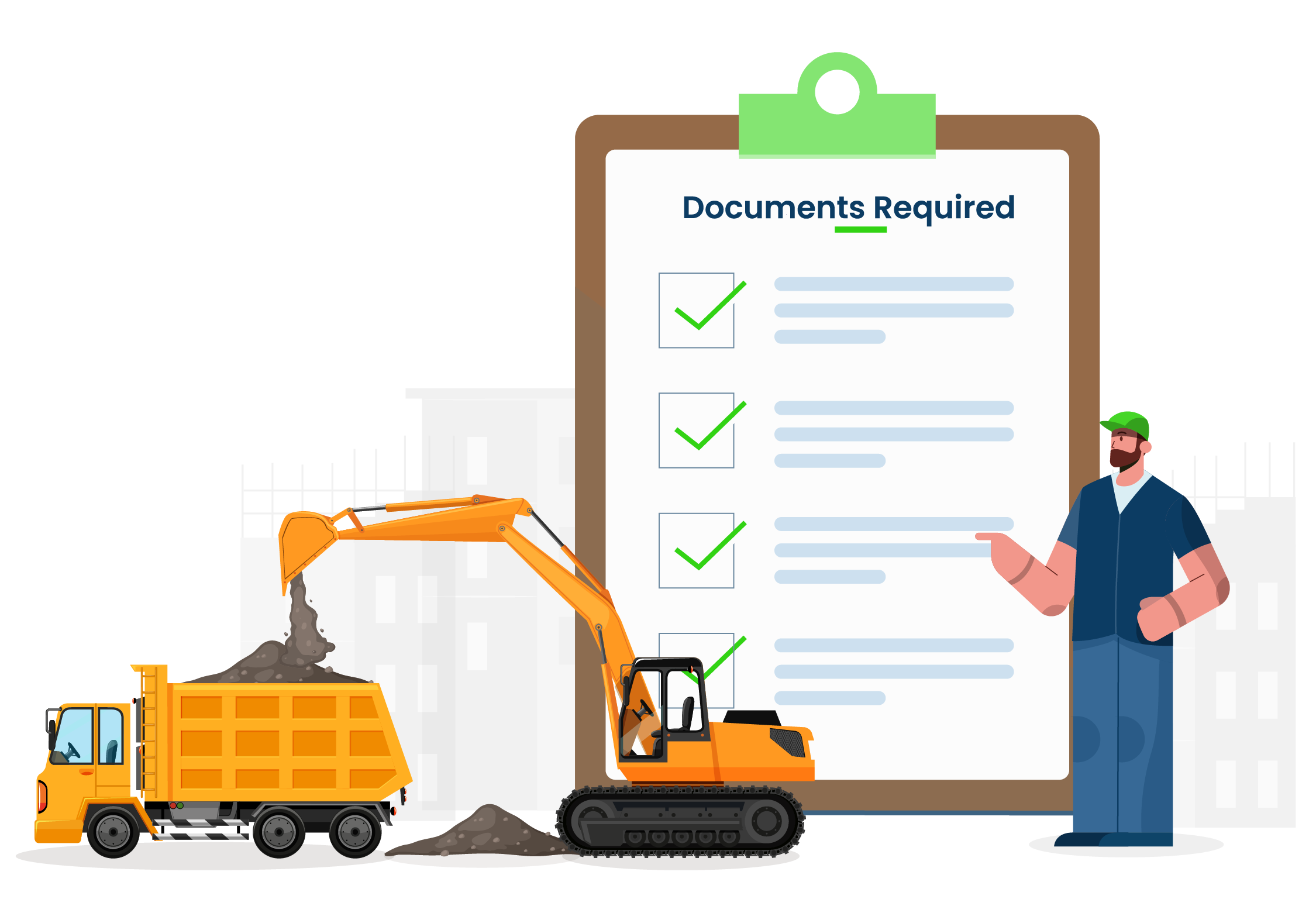Updated on December 20, 2025 01:08:20 PM
Acquiring Construction and Demolition Waste Management Authorization is crucial because Jharkhand is one of the most populated states in India famous for its mineral resource deposits and its expanding industrial growth which fail to handle construction and demolition (C&D) waste properly. The C&D waste was relatively lower in the past as the Jharkhand state has gradually intensified its infrastructural developments and urbanization in the recent past, which has pressurized the existing waste management systems, and has possibilities of environmental risks. From the new construction projects and demolitions of structures that were earlier constructed, this leads to land degradation, pollution and poses health risks to the community in case they are not well disposed of. Having appreciated the severity of these problems the state government has been implementing the necessary measures to address these problems and encourage the proper management of wastes. Measures involve calling for the construction of specific centers that receive, sort and recycle C&D waste, setting very strict laws to deal with the wastes and prevent them from harming the environment as well. It is also still promoting privatization by involving the private players in enhancing the facilities as well as efficacy of waste management in the state. Through an efficient management of C&D waste and ensuring better waste disposal through segregation, recycling, and reusing processes, Jharkhand expects to minimize the impacts of the waste on the environment and at the same time enhance the growth of sustainable urban environment necessary for its growth and development.
Construction & Demolition waste also known as the Construction & Demolition materials include waste products such as rubble that are produced as a result of construction, improvement or destruction of structures. This waste stream comprises elements such as concrete, bricks, wood, metal, glass, tiles, and plastics. In construction processes, the common wastes include concrete and metals where the materials used in construction such as concrete and metal are initially cut or shaped and then thrown away as scrap, demolition processes involve wastes where structures are brought down, and they are dismantled. Another way in which renovation projects add to the amount of C&D waste is by removal of existing fixtures, fittings and building elements.
C&D waste is an environmental and management problem. If ineffective, it results in land degradation, water bodies pollution and enhanced emission of greenhouse gasses. This sometimes leads to congestion of the C&D waste hence exerting pressure on the waste management systems thus having cases of instances whereby the wastes are dumped unlawfully and those that are dumped are not well managed. Besides, poor disposal has implications in the development of health risks to communities and workers as well.
C&D waste management can therefore entail source separation, recycling and reuse of the construction and demolition waste. When different waste reduction methods and technological advances in recycling are incorporated within the C&D waste management systems, it then becomes easy to reduce the effects that these wastes have on the environment and at the same time conserve natural resources.

Construction and Demolition Waste Management Authorization offers numerous benefits that impact the environment, economy, and society. Here are some key benefits:

These usually involve a number of formalities such as obtaining all the legal permits, conforming to the legal requirements when it comes to disposal of wastes and applying all the measures of effective waste management. Here you will get some stress understanding the authorization process:
Every waste generator and service provider while implementing the rules is required to draw a new waste management plan within a period of six months from the date of notification. This plan should contain provisions on how to segregate, store, collect, reuse or recycle, transport and dispose of C&D waste within their jurisdiction.
The operators of the C&D waste processing facilities require the authorization of the State Pollution Control Board (SPCB) or the Pollution Control Committee (PCC) through Form I in which the applicant must prove that the facility meets the environmental standards and adequate infrastructural provisions are in place.
If approved, the SPCB/PCC assesses the application on its compatibility to conform to specified environmental qualities of the facility. Also as part of the Research Analysis, the needs for development of these infrastructure, technology and operational plan of the facility will be evaluated against the projections of the C&D waste generation.
Upon successful assessment, the SPCB/PCC grants authorization to the facility. This authorization is crucial for the facility to operate legally and is subject to periodic monitoring and compliance checks by the SPCB/PCC.
Once the SPCB/PCC conducts the assessment and approves it, the SPCB/PCC then gives the authorization to the facility. It is a legal requirement for such a facility to be authorized to operate and such authorization must be coordinated by the SPCB/PCC and may include periodic reviews and check-ups.

To obtain authorization for a Construction and Demolition (C&D) waste management facility in India, the following documents are required:


Professional Fees to obtain Construction and Demolition Waste Management Authorization in ₹99,000 (only with Professional Utilities)

The C&D Waste Management Authorisation to be granted is valid for a period of 5 years as per Construction & Demolition Waste Management Rules, 2016.
The key points regarding the validity of the authorization are:

Conclusion
Construction and Demolition Waste Management Authorization is vital especially in the state of Jharkhand because of the current significant development in industrialization and infrastructural development. To reduce the environmental and health implications the Jharkhand government is working to strengthen waste management, by integrating facilities for the sorting of C&D waste, and by enacting strict rules and regulation. A recycling, reuse and disposal program developed by the state is not only against pollution but also in favor of economic development and resources. As Jharkhand moves towards further growth and urbanization, a five-year authorization cycle of the C&D waste facilities guarantees the latter adheres to environmental standards.

Professional Utilities simplify registrations, licenses, and compliances for your business. With experienced guidance and nationwide support, we help you complete every requirement efficiently and effectively.






"Explore how Professional Utilities have helped businesses reach new heights as their trusted partner."

It was a great experience working with Professional Utilities. They have provided the smoothly. It shows the amount of confidence they are having in their field of work.

Atish Singh
It was professional and friendly experience quick response and remarkable assistance. I loved PU service for section 8 company registration for our Vidyadhare Foundation.

Ravi Kumar
I needed a material safety data sheet for my product and they got it delivered in just 3 days. I am very happy with their professional and timely service. Trust me you can count on them.

Ananya Sharma
Great & helpful support by everyone. I got response & support whenever I called to your system. Heartly thanx for Great & Super Service. Have a Great & Bright future of team & your company.

Prashant Agawekar
Thank you so much Professional Utilities team for their wonderful help. I really appreciate your efforts in getting start business. Pvt Ltd company registration was smooth yet quick.

Abhishek Kumar
I applied for Drug licence and company registration and their follow-up for work and regular updates helped me a lot. They are happily available for any kind of business consultancy.

Vidushi Saini
Great experience went to get my ITR done, process was quite convenient and fast. Had a few queries, am happy about the fact those people explained me all things I wanted to know.

Taniya Garyali
Great services provided by Professional Utilities. They are best in this industry and the best part is their prices are so affordable. Kudos to you. Now you guys are my full-time consultant.

Aftab Alam
Frequently Asked Questions
The proper management of C&D waste becomes important in Jharkhand because of the increasing industrial and infrastructural development. When properly managed, the impacts of environmental hazards are minimized on pollution, land degradation and health, while at the same time enhancing the economic production through efficiency in the use of the available resources besides providing employment opportunities.
There are several advantages such as; creating new employment opportunities in recycling and waste processing industries, economic growth by reduction of disposal cost and material recovery, giving cost benefits in recycling and reusing materials, and offering a relief to the landfill sites.
General steps include developing an authorization document as a waste management plan, applying for an authorization through Form I to the SPCB/PCC, assessment by the SPCB/PCC and finally a physical check and monitoring at a prescribed minimum frequency.
The authorization is processed for the validity period of 5 years. Renewal applications are meant to be submitted ninety days before the termination of the authorization and the SPCB/PCC will assess it against the initial conditions.
Speak Directly to our Expert Today

Reliable

Affordable

Assured